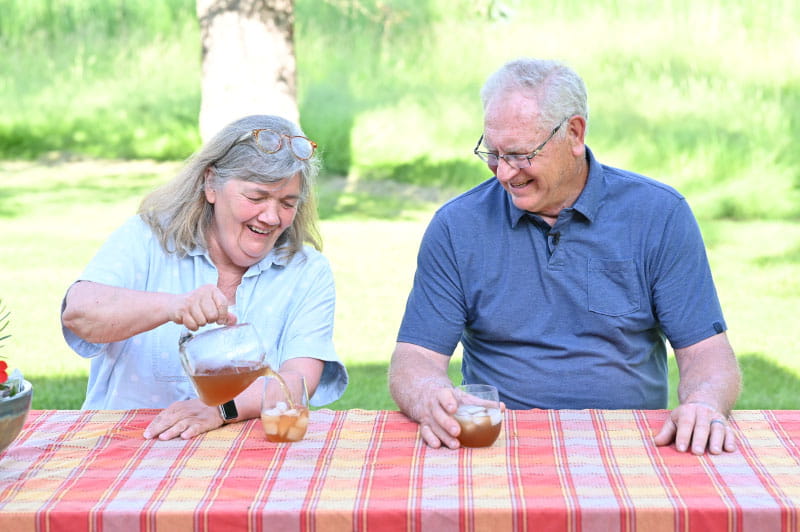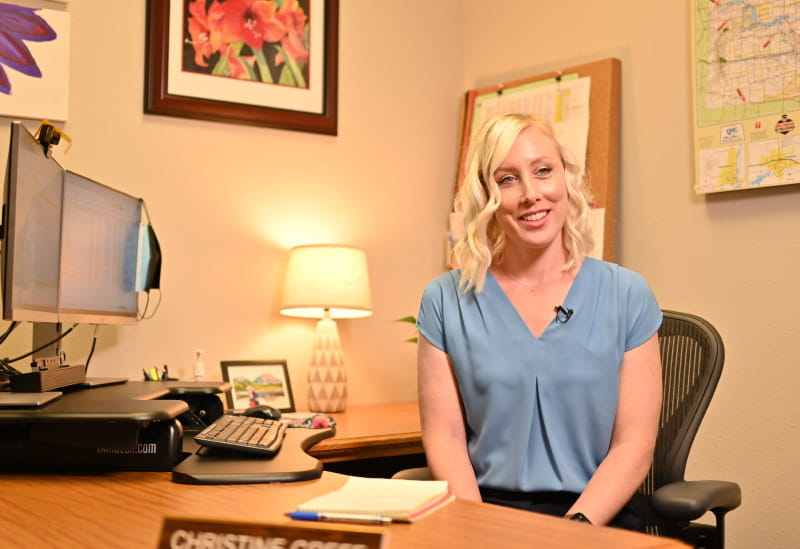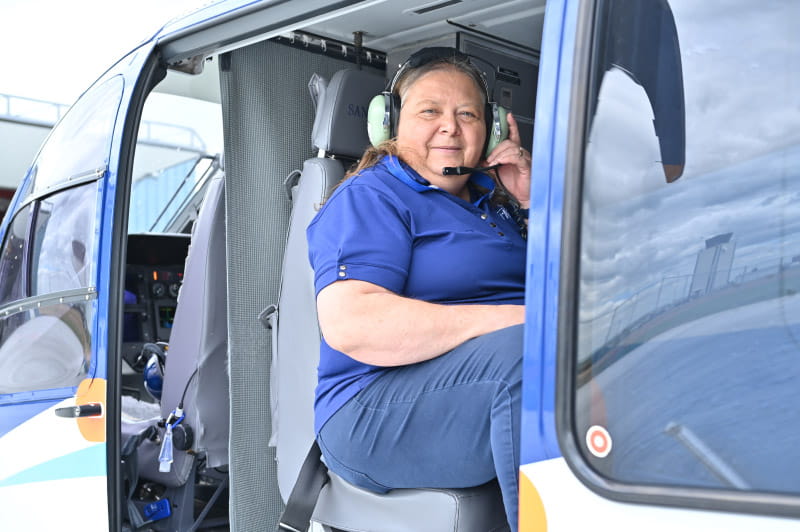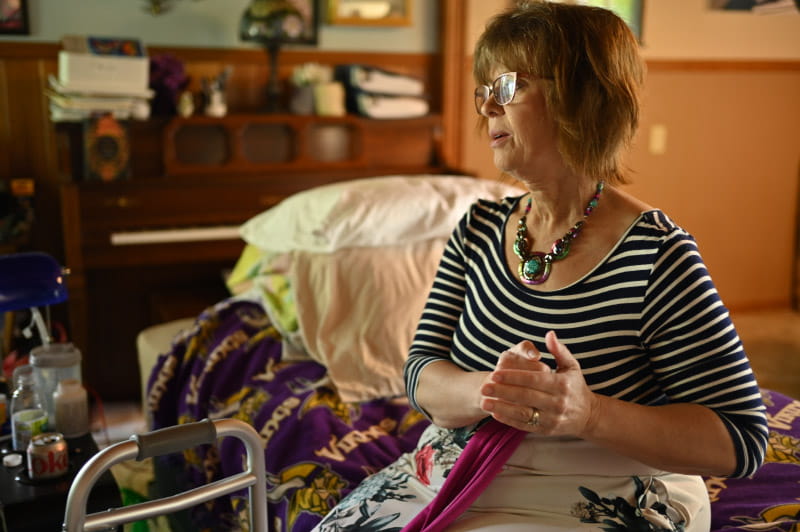Time, distance and staffing pose challenges to health care in rural North Dakota
By Tate Gunnerson, American Heart Association News

VALLEY CITY, North Dakota – Teamwork made all the difference when Chuck Wendel collapsed and went into cardiac arrest at age 58 while shooting hoops in a North Dakota high school gym.
Buff Murray, a local high school teacher was playing on another court when he heard what had happened to Wendel. Trained twice in how to use an AED, or automated external defibrillator, Murray ran to a nearby activity center to retrieve one.
Meanwhile, Wendel's teammates called 911 and started chest compressions. Murray returned with the AED, which confirmed Wendel needed CPR. The device instructed Murray when a shock was needed. It likely saved Wendel's life.
(VIDEO: North Dakota works to shorten a long survival chain in rural cardiac care)
Paramedics soon arrived to take Wendel to Valley City's only emergency department. From there, a helicopter took him about 60 miles east to a hospital in Fargo. Doctors determined a heart attack had caused his cardiac arrest. They inserted multiple stents to clear blockages in his arteries.
If Wendel's heart had stopped while on his 600-acre farm, the outcome might have been different. Indeed, to save valuable time, Wendel said, residents will often call 911 and meet the ambulance on the road. Otherwise, "it might take 40 minutes for (paramedics) to get there," he said.

Roughly 66 million people – 20% of the U.S. population – live in rural areas, according to data from the U.S. Census Bureau. In North Dakota, 39% of the state's more than 779,000 residents live in rural areas.
A presidential advisory from the American Heart Association in 2020 found that health problems are significantly worse in rural areas than urban areas. In addition, people living in remote rural areas have higher rates of risk factors such as diabetes, obesity and high blood pressure. And heart disease rates are 40% higher in rural areas, according to 2017 data from the Centers for Disease Control and Prevention.
"Time is brain and heart, so when you live in rural areas, it's important to activate the emergency response," said Christine Greff, cardiac and stroke systems coordinator at the North Dakota Department of Health and Human Services.
Calling 911 immediately after recognizing a cardiac arrest, heart attack or stroke is one of the first actions in the chain of survival, a sequence of critical steps to save someone outside a hospital. Greff said it's one step some North Dakotans skip.
"In my experience, about half of stroke patients present to the critical access hospitals via EMS, and the other half by private vehicle," she said. "The cardiac and stroke systems are designed to work best when the 911 system initiates the emergency response."

Even when residents do call 911 immediately, the ambulance may arrive too late simply because of long distances to travel, said Marcy Dawson, an outreach development specialist who has covered the entire state and border towns in South Dakota and Montana as a flight nurse for 20 years.
Dawson also has volunteered with local medical services as a nurse and paramedic. The ambulance services are part of a network that also includes first responders, local sheriff's and fire departments.
While such volunteers fill a vital gap, "they're not sitting there right at the base to leave and respond to an emergency," she said. Indeed, in 2015, EMS call times were as much as 30% higher in rural areas, according to data from the National Emergency Medical Services Information System.

Adding to the challenges, the number of volunteers is declining. That can result in delays when time is a matter of life and death.
Hospital staffing is another issue in North Dakota, said Alana McClellan, a nurse in Valley City for 30 years and nurse manager at CHI Mercy Health Valley City. Designated as an acute cardiac- and stroke-ready facility, the hospital provides emergency care for cardiac and stroke events.
That said, she pointed out there are often only three nurses and one doctor in the building at night, "so it's all hands on deck when an emergency happens."
Just six of North Dakota's 53 counties have an adequate number of health care workers, according to the Rural Health Information Hub. In addition, 12 of 39 rural hospitals in North Dakota are at risk of closing, says an April report from the Center for Healthcare Quality and Payment Reform. Nationwide, more than 30% of rural hospitals are at risk of closing for financial reasons.
The hospitals in rural North Dakota "can't compete with some of the bigger hospitals that can offer more money, so we are short of help," McClellan said, noting that nurses pick up extra shifts and wear many hats, from helping the dietary department to cleaning rooms. "I've never seen it like this in my whole career."
Despite all those obstacles, North Dakotans are working to make a difference.
Telemedicine is one approach that helps to fill the gap. Two emergency rooms at the Valley City hospital are equipped with communication devices that allow a doctor at another hospital to appear on the screen with the push of a red button.
Such support allows hospital staff to stretch their limited resources. "It's a rapid way for us to say, 'We need immediate help here in Valley City,'" said McClellan, recalling when two critical patients required treatment in 2017. The only medical staff member on duty attended to a trauma patient while she worked with a Sioux Falls doctor to care for the other patient.
"It's a different kind of medicine out here," McClellan said, noting the nearest major medical center is about an hour away in Fargo.

McClellan also is involved with the state's Cardiac Ready Community Program, which conducts CPR training, distributes AEDs to places like churches and libraries, and raises awareness about the signs and symptoms of heart disease. As of November 2023, there were at least 18 designated CRC programs in North Dakota, and nearly 30 communities had indicated their intent to seek that designation.
"One of the goals of the Cardiac Ready Community is to prepare the community to recognize the symptoms of a heart attack or stroke and begin CPR when needed," Greff said. The Cardiac Ready Community also aims to have residents, first responders and hospital staff work seamlessly together to improve outcomes.
Those efforts have paid off. According to Dawson, the outreach specialist, in 2016, a woman who attended a local CPR training knew to perform chest compressions on her 90-year-old husband when he went into cardiac arrest. Another woman told Dawson that she knew the importance of calling 911 when she experienced chest pain.
Nearly two decades ago, Murray's quick thinking and familiarity with AEDs saved Wendel's life on the basketball court.
Now a volunteer firefighter, Wendel has worked to get more AEDs into the community.
"If I can help somebody, I'll help them," he said, noting his teammates' quick action prevented him from having cognitive difficulties associated with cardiac arrest. "I was lucky that I fully recovered."
American Heart Association News sent reporters to five states to cover rural health challenges, and how people in rural America are working to overcome them.





